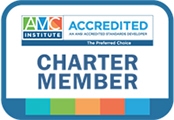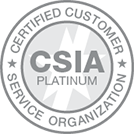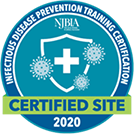If you have been following along with our other digital marketing blogs, the last topic we covered was performing your marketing audit. Now that you have all this information, what do you do with it? And to take it a step further: how do you get all the work completed with a very limited budget and small volunteer group? We recommended starting with three platforms: your website, social media, and email marketing.
We’ll start with your website. After auditing your content, you’ll hopefully have a list of pages that need to be updated. Prioritize the pages starting with those that receive the highest traffic. So if your most trafficked page needs new content or imagery, start there and work your way down your page list. Remember that less is more when it comes to text. Most people aren’t reading long paragraphs of information anymore. Keep your content concise, informative, and error-free. Be sure to include all those important keywords you need for SEO optimization. It’s also important to have clear call-to-actions. If you want users to learn more about membership, include a clear button or text link to your membership page. If you’re promoting your annual meeting, include a roadblock or pop-up that links over to your event registration. For the visual layout, you’ll want to take the critiques from the audit and improve your navigation and overall design. We recommend starting with your homepage which l sets the tone for the rest of your pages. It’s always best to have a clean and organized homepage. You don’t want users to visit your site and be overwhelmed with clashing colors, random imagery, or too much text.
Once your website is under construction, start thinking about your social media presence. If you’re not on any platforms, start with just one. Find the one that your team is most comfortable using and post at least twice a week. An easy place to start is talking about your value proposition and start building brand awareness: post about the benefits of joining your organization, the reasons someone should become a member, or why they should take one of your courses or get certified. Then you can move on to sharing industry news and content, event information, and new campaigns. Posting on a regular basis will build your following and your credibility on the platform. Mapping your content through a content calendar is helpful too. This allows you to plan what information you’re posting throughout the month to make sure you have a variety of topics that are informative and interesting. It's important to use visually-appealing images and graphics. These are easy to create using a free-to-use online graphic design tool, like Canva. And just like we mentioned with your website content, no one is reading long forms of content, so keep your posts short and to the point.
For the times you have more to say, email newsletters are the appropriate vehicle. Most email providers are low-cost and offer discounts for nonprofits. We recommend MailChimp or Constant Contact because they are user-friendly templates and are e easy to customize. The goal of your newsletter should be to communicate with your audience, providing engaging content which directs traffic back to your website. To start, create a monthly newsletter. Include a message from your president or one of your board members, industry updates, member profiles, information on your upcoming events, links to any blogs you have written, or reminders on membership benefits or renewal deadlines.
So that all sounds like a lot of work! But you don’t have to do it all at once. We recommend making a project list of what work you’d like to do and then setting some reasonable goals for each project. In our next blog post, we’ll discuss how to develop an effective project plan and the tools we use at AH to keep our large projects organized.
If you need a little extra help, partner with AH to create a robust marketing strategy! To learn more, download our Digital Marketing Toolkit or contact us at inquire@ahint.com.




